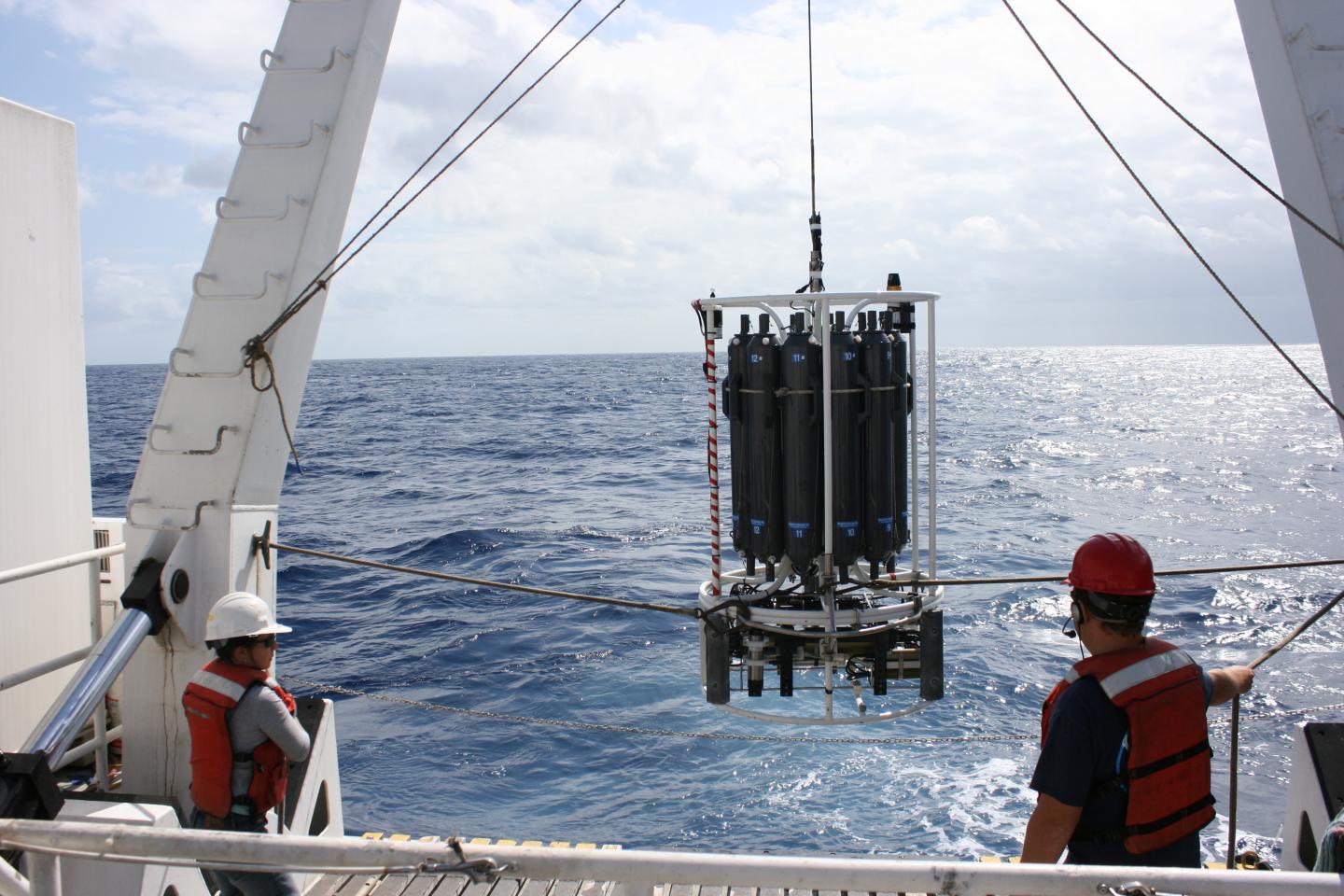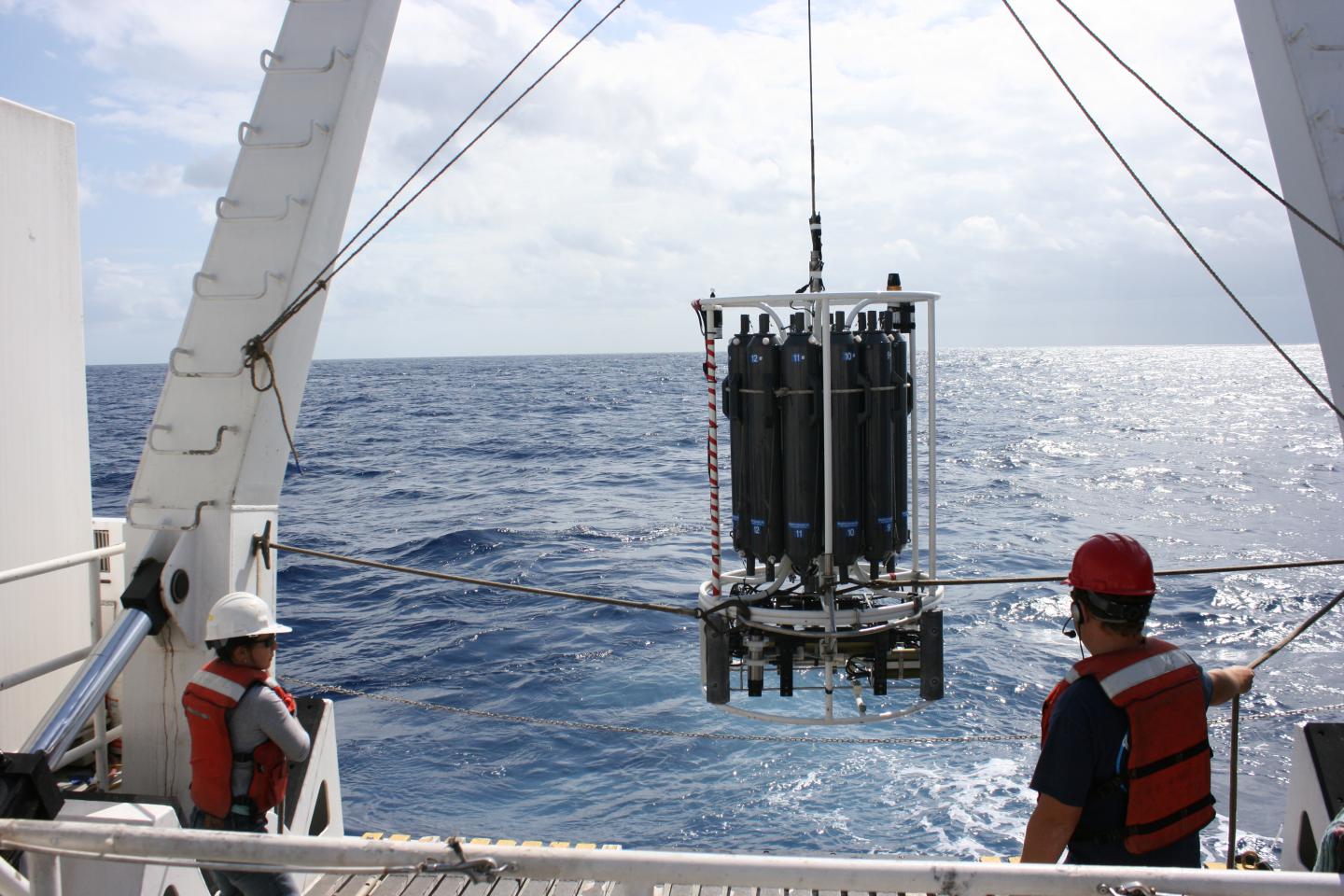
Credit: Adam Monier, University of Exeter
(Toronto – Jan. 9, 2017) An international research team has discovered two phytoplankton groups – unlike any known species – in climate-sensitive areas around the world. While they appear relatively rare compared to other phytoplankton, scientists say their prevalence in warm waters suggests they could be important in future ocean ecosystems.
The findings, published Jan. 9 in Current Biology, traced the phytoplankton genes to their potential ancient origins and matched them with sequences in around 200 contemporary samples. The new phytoplankton groups were increasingly abundant in warmer, low-nutrient surface waters at sites including the Sargasso Sea, Bay of Bengal and North Pacific Gyre.
"These new phytoplankton appear to thrive in the world's most desert-like waters where most other eukaryotic species decrease," said Alexandra Z. Worden, a senior fellow at the Canadian Institute for Advanced Research, who led the team from the Monterey Bay Aquarium Research Institute (USA) alongside collaborators from Oregon State University (USA), Woods Hole Oceanographic Institution (USA) and the National Institute of Oceanography (India).
Both phytoplankton groups were found in larger numbers in warmer, low-nutrient surface waters compared to numbers in cooler, higher-nutrient regions. This pattern surprised researchers because larger, eukaryotic phytoplankton often decline to vanishingly-low numbers under these conditions, which typically favour small cyanobacteria.
Ocean surface warming creates a layer of low-nutrient water separate from cooler, nutrient-rich water below. This process occurs annually in large regions of the open ocean where punctuated winter mixing allows for a short "bloom" of phytoplankton life that is followed by a summer season of warm, low-nutrient surface waters. Most of the bloom species disappear during summer because they are not effective competitors for nutrients at low concentrations. Ocean surface warming is leading to an expansion of these low-nutrient environments in a process known as ocean desertification.
"As microbes in our oceans are forced to adapt to climate change, these are the types of organisms we really need to understand," Worden said.
Scientists have had difficulty measuring the impact of ocean warming on resident microbial groups due to a lack of consistent information on microbes, like the phytoplankton that carry out marine photosynthesis. Worden's team established the Baselines Initiative to overcome this hurdle with more than 6,000 full-length RNA sequences and time-series sampling, where the same location is sampled repeatedly through the seasons and over the years. The ultimate goal of these oceanographic time-series is to capture current day information against which future changes in the ocean can be assessed.
Researchers first discovered one of the new phytoplankton groups in 2006 when they noticed one "weird" sequence out of millions. They thought the data from a tropical island off Costa Rica might have been a mistake until they saw identical sequences in the North Pacific and in coral reefs off Curaçao. To verify their findings, they filtered the organisms' DNA from the seawater. Next, they generated the full-length RNA gene sequence and compared it with other organisms to place it in an evolutionary tree. Finally, they mapped the organisms through samples from the BIOS Bermuda Atlantic Time-Series Study, the TARA Oceans Expedition and the Baselines Initiative, including the SeaFar Curaçao project of the Integrated Microbial Biodiversity Program.
The first phytoplankton lineage appears to be an entirely new group of species of phytoplankton. Researchers believe its ancestor may be a single-celled protistan group that took a separate evolutionary path from the haptophyte algae, which arose between 1 billion and 637 million years ago. The second lineage appears to be closely related to haptophytes. However, it is a new group that doesn't belong to any known species or class.
"To understand future oceans one-off sampling won't work. If we had taken one snapshot of the ocean in spring we would have thought these phytoplankton didn't matter, but because we kept going back we realized they are important – it takes year-round sampling of the seasons to see that," Worden said.
Worden's lab will be returning to the Sargasso Sea and Curaçao to better understand the ecology of the two phytoplankton groups. How these groups contribute to the food chain and carbon cycle is currently unknown. Worden believes one possibility is that they get their nutrients though a combination of photosynthesis and feeding on other cells.
###
"Newly discovered deep-branching marine plastid lineages are numerically rare but globally distributed" was published Jan. 9 in Current Biology by Chang Jae Choi, Charles Bachy, Gualtiero Spiro Jaeger, Camille Poirier, Lisa Sudek, V.V.S.S. Sarma, Amala Mahadevan, Stephen J. Giovannoni and Alexandra Z. Worden. This research was supported by the Office of Naval Research, Monterey Bay Aquarium Research Institute, the Gordon and Betty Moore Foundation and CIFAR.
http://www.cell.com/current-biology/fulltext/S0960-9822(16)31385-9
About CIFAR
CIFAR creates knowledge that is transforming our world. Established in 1982, the Institute brings together interdisciplinary groups of extraordinary researchers from around the globe to address questions and challenges of importance to the world. Our networks help support the growth of research leaders and are catalysts for change in business, government and society. CIFAR is generously supported by the governments of Canada, British Columbia, Alberta, Ontario and Quebec, Canadian and international partners, as well as individuals, foundations and corporations.
Media Contact
Juanita Bawagan
[email protected]
416-971-4884
@cifar_news
http://www.cifar.ca
############
Story Source: Materials provided by Scienmag





